Area 41
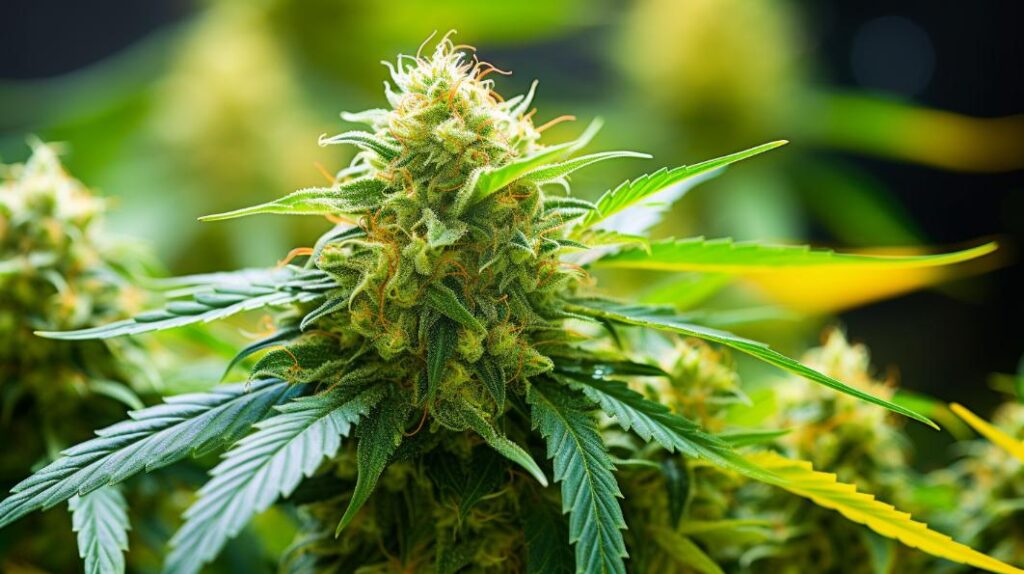
The Area 41 strain, a balanced hybrid emanating from the crossbreeding of Lemon OG and Gelato 41, has garnered attention for its distinctive blend of effects and flavors. With an average THC content of 22%, this strain offers a multifaceted experience that ranges from stimulating mental highs to potential therapeutic benefits for conditions such as chronic pain and depression.
While users praise its unique lemon and nutty flavor profile, the accompanying dry mouth and potential dizziness raise intriguing questions about its suitability for all cannabis enthusiasts. As we explore the genetic lineage, terpene profile, and comparative analysis with similar strains, the complexities of Area 41 invite a deeper investigation into its burgeoning popularity and the nuances that make it a subject of interest among both consumers and researchers.
Genetic Lineage
The Area 41 strain boasts a complex genetic lineage, predominantly derived from the cross-breeding of Lemon OG and Gelato 41, further enhanced by contributions from Alien Labs to augment its potency and flavor profile. This meticulously engineered strain stands as a testament to the innovative breeding strategies employed by cannabis geneticists. By integrating the robust genetic frameworks of Lemon OG, known for its invigorating citrus aroma and stress-relieving properties, with Gelato 41, celebrated for its dessert-like flavor and euphoric effects, breeders have crafted a hybrid of unparalleled quality. Alien Labs’ involvement introduces a layer of refinement, leveraging their expertise in selecting phenotypes that maximize the terpene profile and THC content, thereby ensuring a superior cannabis experience.
The deliberate selection and breeding process, grounded in both traditional and contemporary cultivation techniques, have culminated in a strain that exhibits a balanced terpene profile, reminiscent of its OG Kush ancestry, yet distinctly innovative. This genetic synthesis not only underscores the strain’s appeal among connoisseurs for its aromatic richness and potency but also highlights the scientific rigor applied in its development. The resultant Area 41 strain, therefore, represents a notable achievement in cannabis genetics, offering a complex interplay of flavor, aroma, and psychoactive potential.
History and Origin
Having explored the genetic lineage of the Area 41 strain, it is imperative to examine its origins and the historical context that gave rise to its development. The creation of Area 41 is a hallmark in cannabis cultivation, representing a sophisticated blend of Lemon OG and Gelato 41. This hybridization process, spearheaded by Alien Labs, underscores a deliberate attempt to enhance the strain’s potency, flavor, and therapeutic efficacy. With a THC level averaging at 22%, the Area 41 strain exemplifies the pinnacle of genetic refinement aimed at delivering a long-lasting and stimulating high.
Years of meticulous cultivation and refinement, employing both traditional and modern techniques, have culminated in the strain’s current acclaim among cannabis enthusiasts. This dedication to excellence has not only optimized Area 41’s unique terpene profile but also its applicability in treating conditions such as depression, chronic stress, nausea, appetite loss, and notably, chronic pain. It is advised for professionals before using, to fully appreciate the depth of its therapeutic potential.
The historical evolution of Area 41 underscores a journey of innovation and precision, marking its status as a distinguished product within the cannabis industry.
THC/CBD Content
Area 41 strain’s distinctive cannabinoid profile, marked by an average THC level of 22% and a minimal CBD content, underscores its potent psychoactive properties and therapeutic potential. The balanced THC/CBD ratio enhances both its stimulating and relaxing effects, making it a versatile choice for consumers seeking relief from stress, anxiety, and depression. This understanding is crucial for leveraging its medicinal benefits effectively.
-
Consumption Methods: Various methods, including smoking, vaping, and edibles, can influence the onset and intensity of effects, highlighting the importance of selecting an appropriate method to achieve desired outcomes.
-
Entourage Effect: The interaction between THC, CBD, and other minor cannabinoids may amplify the therapeutic benefits of the Area 41 strain, suggesting a complex interplay that enhances its efficacy.
-
Dosing Recommendations: Careful consideration of dosing is essential to maximize benefits while minimizing potential side effects, such as dry mouth or paranoia, especially for novice users or those with lower tolerance levels.
-
Extraction Techniques: Advanced extraction methods can isolate specific cannabinoids from the Area 41 strain, offering tailored solutions for medical patients and recreational users alike, and further underlining the importance of the entourage effect in enhancing the strain’s properties.
Terpene Profile
Moving beyond its cannabinoid composition, the unique terpene profile of Area 41 plays a pivotal role in defining its sensory characteristics and therapeutic potential. This strain exhibits a distinctive blend dominated by pine, citrus, and floral undertones, primarily driven by myrcene and caryophyllene. These terpenes not only contribute to the spicy, earthy flavors but also enhance the overall experience through their aromatic diversity. The presence of myrcene and caryophyllene is essential in shaping Area 41’s smooth, slightly spicy taste, underscored by earthy and resinous pine notes.
The extraction methods employed to isolate these terpenes are critical in preserving their purity and ensuring the integrity of the strain’s aromatic profile. Moreover, the entourage effect, a phenomenon where terpenes and cannabinoids interact synergistically, amplifies the therapeutic potential of Area 41. This interaction suggests a complex relationship between the strain’s terpene composition and its efficacy, offering a rich area for further investigation.
Understanding the terpene profile of Area 41 also opens avenues for its use in aromatherapy benefits and infused products, leveraging the strain’s unique sensory attributes. The technical analysis of these terpenes, their extraction, and their role in the entourage effect with cannabinoids underscores the multifaceted value of Area 41 beyond its initial sensory appeal.
Effects
The effects of the Area 41 strain, as reported by users, encompass a spectrum of sensations including arousal, increased sociability, and heightened appetite. These outcomes are derived from an analysis of user experiences and are critical in understanding the multifaceted impact of this particular cannabis strain. Notably, the strain exhibits a complex profile that influences both the psychological and physiological dimensions of the user experience.
-
Arousal Benefits: Users frequently report a significant enhancement in arousal, suggesting that Area 41 may influence sexual desire and performance. This effect is of particular interest to researchers studying the aphrodisiac properties of cannabis strains.
-
Talkative Tendencies: The increase in sociability, marked by talkative tendencies, underscores the strain’s potential in settings that require social interaction. This effect is invaluable for individuals seeking to overcome social anxiety or enhance their communication skills.
-
Hunger Inducement: The pronounced hunger inducement associated with Area 41 points to its utility in addressing appetite loss. This aspect is critical for users who might be battling conditions that suppress appetite.
-
Professional Caution Advisory: Despite its beneficial effects, users are advised to exercise caution, seek professional medical advice, and be mindful of individual reactions to mitigate potential negative outcomes such as dry mouth, dizziness, and headaches.
Medical Uses
Leveraging its complex cannabinoid profile, the Area 41 strain has emerged as a versatile candidate for addressing a range of medical conditions, including anxiety, depression, stress, nausea, appetite loss, and chronic pain. In light of the data-driven approach to cannabis as medicine, it’s crucial to examine Area 41’s application in therapeutic settings, focusing on dosage recommendations, patient testimonials, and potential interactions.
| Medical Condition | Percentage of Users Reporting Benefits |
|---|---|
| Anxiety | 29% |
| Depression | 11% |
| Stress | 11% |
| Nausea | Not Specified |
| Chronic Pain | Not Specified |
Dosage recommendations for Area 41 vary significantly depending on the patient’s tolerance, the severity of symptoms, and the method of consumption. It’s advisable to start with a low dose and gradually increase as needed, under the guidance of a healthcare professional.
Patient testimonials often highlight the efficacy of Area 41 in managing symptoms of anxiety and stress, with many reporting a significant improvement in their quality of life. However, potential interactions with other medications highlight the importance of consulting healthcare providers before incorporating Area 41 into a treatment regimen.
Flavor and Aroma
Area 41 strain’s unique sensory profile, characterized by its aromatic blend of pine, citrus, and floral undertones, plays a pivotal role in its appeal among connoisseurs and medical users alike. The intricate aroma and flavor nuances stem from a carefully balanced terpene profile, featuring myrcene and caryophyllene, which imbue the strain with its distinctive earthy, spicy, and resinous pine flavors. This complexity not only enriches the smoking experience but also offers a myriad of pairing recommendations and flavor pairing suggestions that can enhance culinary experiences.
- Aroma analysis: The strain’s rich aroma profile includes pine, citrus, and floral notes, attributed to its high resin content and vibrant terpene profile.
- Flavor pairing suggestions: The earthy and spicy flavor profile pairs well with rich, creamy dishes, and can complement citrus-based desserts, offering a versatile pairing palette.
- Pairing recommendations: For culinary enthusiasts, integrating Area 41 into recipes or as an accompaniment to specific dishes can heighten the sensory experience, emphasizing the strain’s unique flavor and aroma characteristics.
- Terpene-driven sensory experience: The presence of myrcene and caryophyllene not only contributes to the strain’s aromatic depth but also suggests potential synergistic effects when combined with certain foods and beverages.
This data-driven, analytical approach to the strain’s flavor and aroma highlights its potential for both recreational enjoyment and culinary exploration.
Appearance
Upon visual inspection, Area 41 strain exhibits densely packed buds characterized by a vivid green hue, interspersed with purple shades and orange pistils, indicative of its high-quality genetics and careful cultivation. The presence of these vibrant colors and the dense bud structure not only contribute to the strain’s visual appeal but also suggest a meticulous selection process for its genetic heritage. Furthermore, the high resin content observed on the surface of the buds underscores the strain’s potency and is a direct reflection of its resinous texture, which is highly valued among cannabis connoisseurs.
The unique blend of colors—ranging from deep purples to bright oranges against a backdrop of vibrant green—coupled with the resinous texture, sets Area 41 apart from other cannabis strains in terms of aesthetic appeal. This visual signature is not merely a matter of aesthetics but serves as a tangible indicator of the strain’s quality and the care invested in its cultivation process. The vibrant and resinous appearance of the Area 41 buds is a testament to its genetic heritage and the meticulous cultivation practices that have been employed, making it highly appealing to both experienced and novice cannabis enthusiasts alike.
Grow Information
Turning our attention to the cultivation process, it is critical to note that the Area 41 strain demands specific environmental conditions to reach its full potential. Cultivating this particular strain requires a meticulous approach, blending scientific understanding with horticultural expertise. The key to unlocking the high yield and potent quality of Area 41 lies in mastering its grow requirements.
-
Temperature Management: Ensuring a stable indoor environment with temperatures maintained between 70-80°F is paramount. This optimal temperature range supports vigorous growth and development.
-
Humidity Control: Precise humidity levels, ideally set around 40-50%, are critical. Such conditions prevent mold growth while fostering dense bud formation and high resin content.
-
Ventilation and Pruning: Effective ventilation systems paired with strategic pruning techniques alleviate common cultivation issues, enhancing plant health and airflow, which directly impacts resin production and bud quality.
-
Harvesting Approach: Patience during the harvesting phase rewards cultivators with a significant yield. Understanding the plant’s cues for maturity ensures that the buds are harvested at their peak potency.
Cultivating Area 41 demands a combination of scientific precision and gardening finesse, highlighting the importance of temperature regulation, humidity management, appropriate pruning, and careful harvesting techniques.
Adverse Effects
Despite its numerous benefits, the Area 41 strain has been associated with several adverse effects, including dry mouth, dizziness, and headaches, as reported by users. Furthermore, some individuals have reported experiencing feelings of paranoia and anxiety, underscoring the importance of understanding the potential psychological impacts of this strain. These adverse reactions appear to vary significantly among users, suggesting a high degree of variability in individual tolerance levels.
To mitigate these potential adverse effects, dosage recommendations play a crucial role. It is advised to initiate consumption with a low dosage, thereby allowing users to assess their personal tolerance. This approach not only minimizes the risk of experiencing adverse effects but also tailors the consumption experience to individual physiological responses. Additionally, seeking professional advice prior to consumption can provide valuable insights into potential interactions with existing health conditions or medications, further reducing the likelihood of negative reactions.
The variance in adverse reactions highlights the complexity of cannabis effects on the human body and underscores the necessity of a cautious, informed approach to consumption. By adhering to dosage recommendations and considering individual tolerance levels, users can better navigate the potential risks associated with the Area 41 strain.
Comparisons with Similar Strains
Understanding the adverse effects associated with the Area 41 strain sets the stage for a detailed comparison with similar strains to evaluate its unique position in terms of efficacy and user experience. Area 41’s balanced genetic composition and its specific terpene profile distinguish it from counterparts, emphasizing the importance of genetics in breeding for desired outcomes. By focusing on cultivation techniques, consumption methods, and user experiences, a comprehensive understanding is achieved.
-
Cultivation Techniques: Area 41’s growth characteristics, influenced by its Lemon OG and Gelato 41 lineage, highlight the role of sophisticated cultivation methods in achieving its high THC content and unique flavor profile.
-
Consumption Methods: The strain’s versatility in consumption methods, whether smoked, vaped, or used in edibles, affects the onset and duration of effects, offering insights into user preference trends.
-
User Experiences: Feedback from users underscores Area 41’s effectiveness in managing conditions such as depression and chronic pain, offering a benchmark for comparing therapeutic outcomes.
-
Terpene Profile: The distinct lemon, ammonia, and nutty undertones of Area 41, derived from its terpene profile, contribute significantly to its therapeutic efficacy and user satisfaction.
This data-driven approach helps in understanding Area 41’s standing in the cannabis community, informed by technical analysis and user-reported outcomes.
Research and Studies
Recent studies examining the Area 41 strain reveal a precisely balanced genetic composition of 50% indica and 50% sativa, underscoring its potential for broad therapeutic applications. Genetic analysis corroborates this equilibrium, which is relatively rare among cannabis strains, suggesting a hybrid’s capacity to offer both relaxation and mental stimulation. This duality is further reflected in the strain’s THC level, which averages at 22%, placing it in the higher potency bracket conducive for treating a variety of conditions including depression, chronic stress, nausea, appetite loss, and chronic pain.
Study results, drawn from a sample of 31 real user experiences, highlight the strain’s distinctive effects such as arousal, talkativeness, and hunger. These subjective accounts align with the genetic predisposition for a balanced effect profile, suggesting a direct correlation between its genetic makeup and user-reported outcomes. Furthermore, users have identified specific therapeutic benefits, with 29% reporting relief from anxiety, followed by 11% each for depression and stress.
The flavor profile, described as a blend of lemon, ammonia, and nutty undertones, adds to its appeal, indicating a complex terpene profile that may contribute to its holistic effects. These findings underscore the value of genetic analysis and user experiences in understanding and validating the therapeutic potential of cannabis strains like Area 41.
Frequently Asked Questions
Is Area 41 a Sativa or Indica?
Area 41 is a balanced hybrid, integrating both sativa and indica influences, characterized by its unique cultivation techniques, profound effects on relaxation and energy, and a distinct flavor profile. It is neither purely sativa nor indica.
Is G41 a Sativa or Indica Strain?
The G41 strain’s classification as sativa or indica hinges on its genetic lineage, terpene profile, and cultivation methods. These factors critically influence its effects, guiding its designation within the cannabis taxonomy.
What Strain Is 41?
The exploration of strain 41’s genetics reveals a balanced hybrid composition, presenting cultivation challenges due to its unique heritage. Analysis of its flavor profile uncovers a complex mix of lemon, ammonia, and nutty undertones.
What Is in Area 41?
Area 41 encompasses genetic origins from Lemon OG and Gelato 41, innovative cultivation methods enhancing its unique terpene profile, and boasts an average THC content of 22%, reflecting its potent and balanced effects.

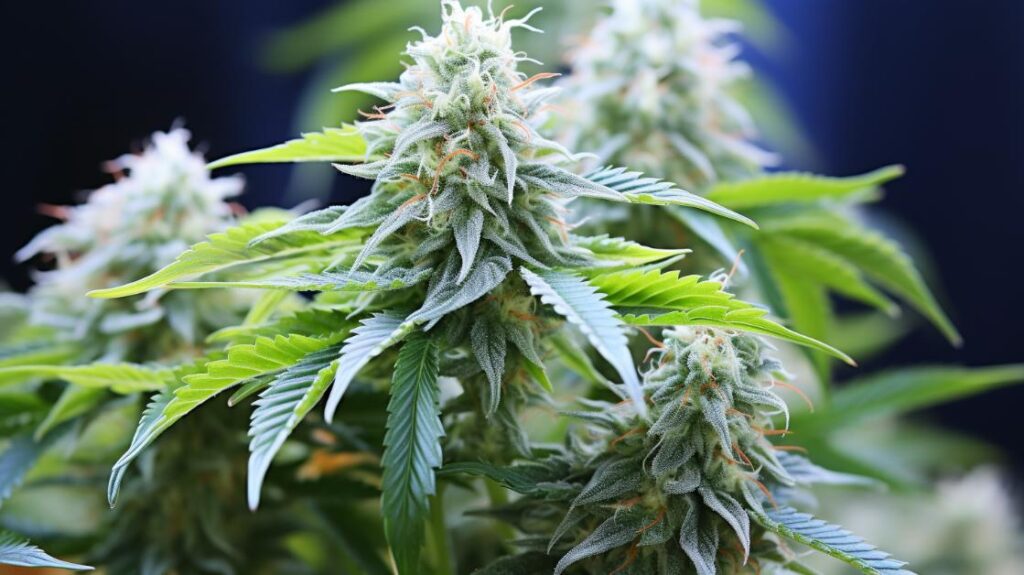
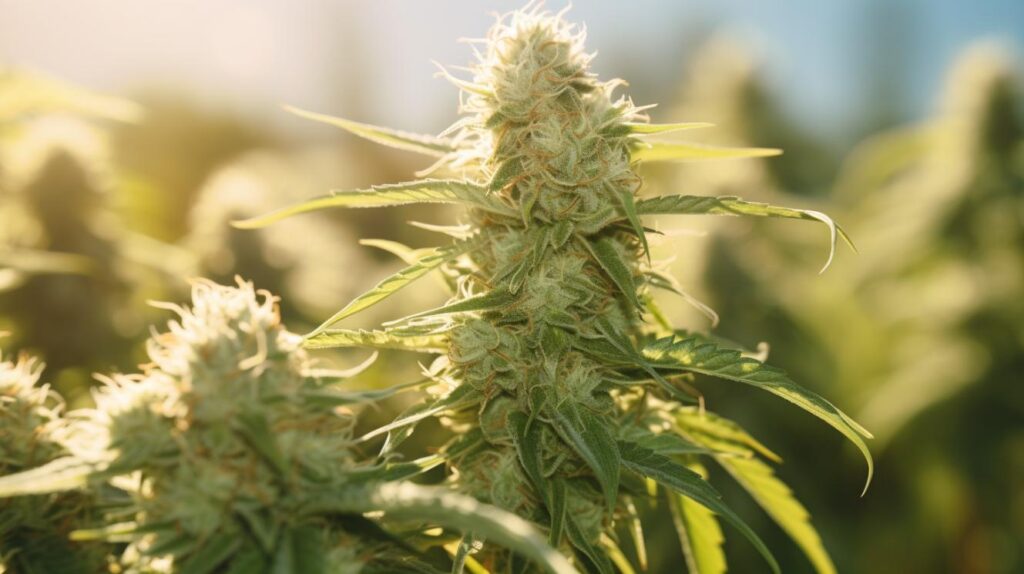
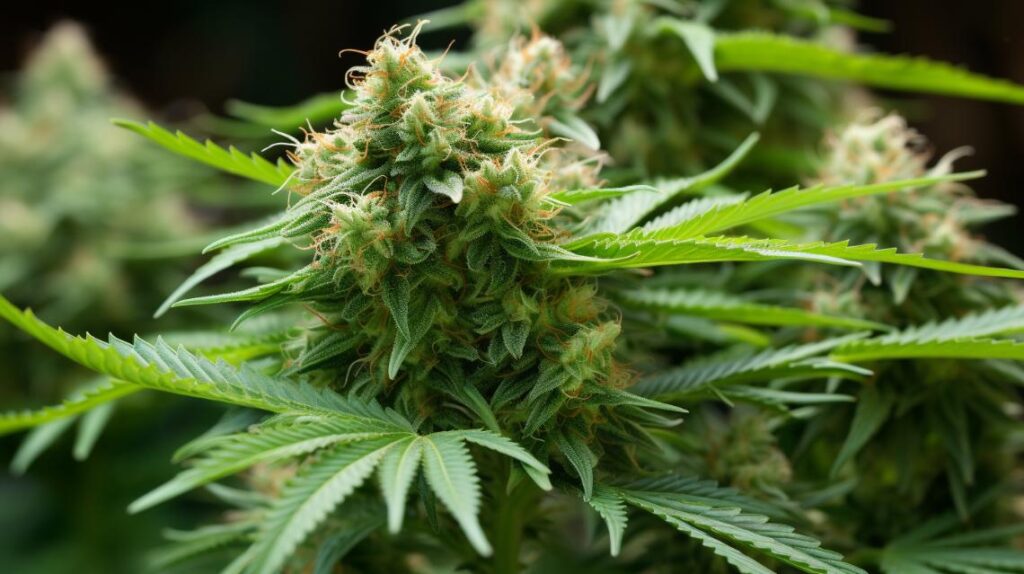
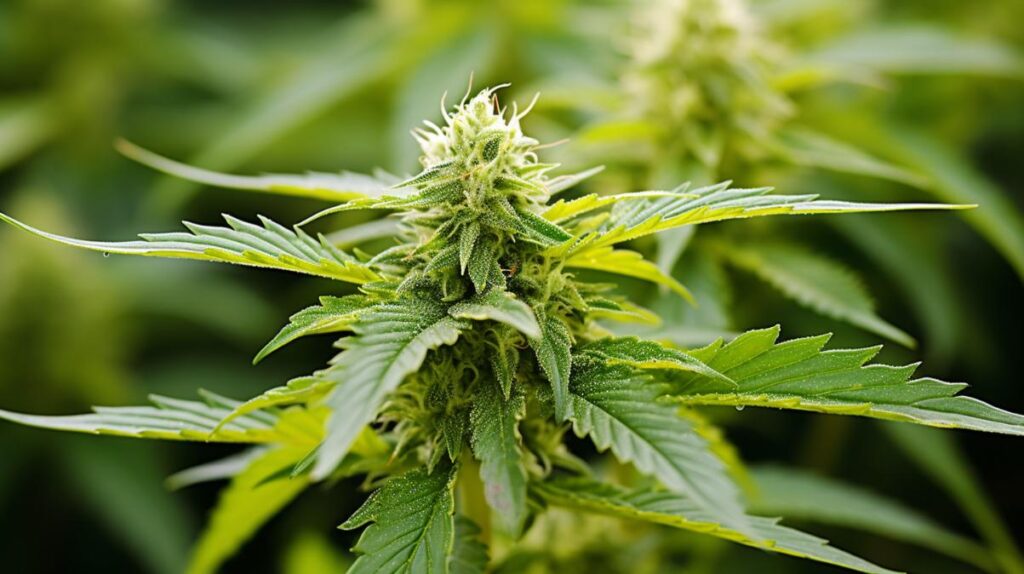
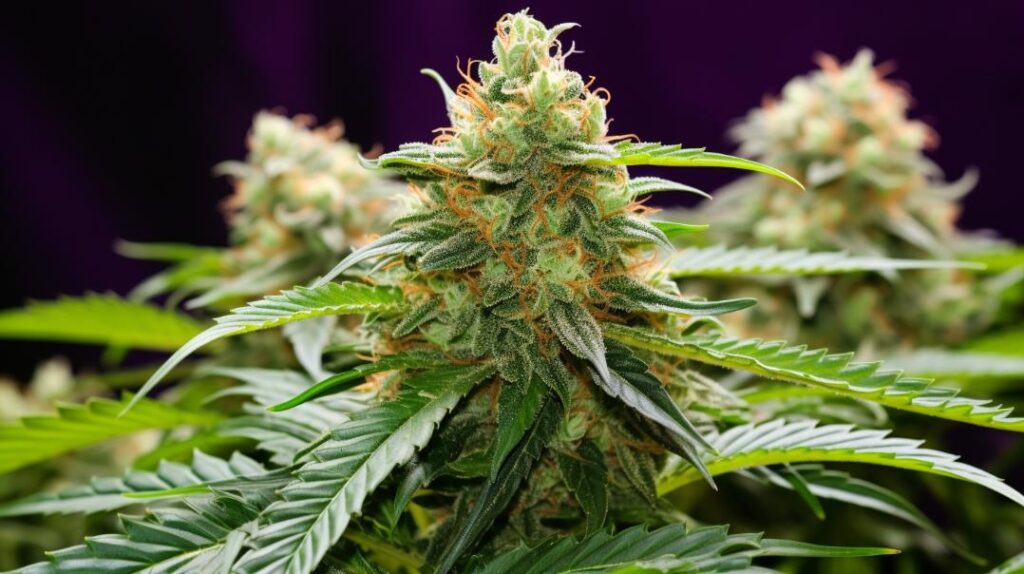

Responses